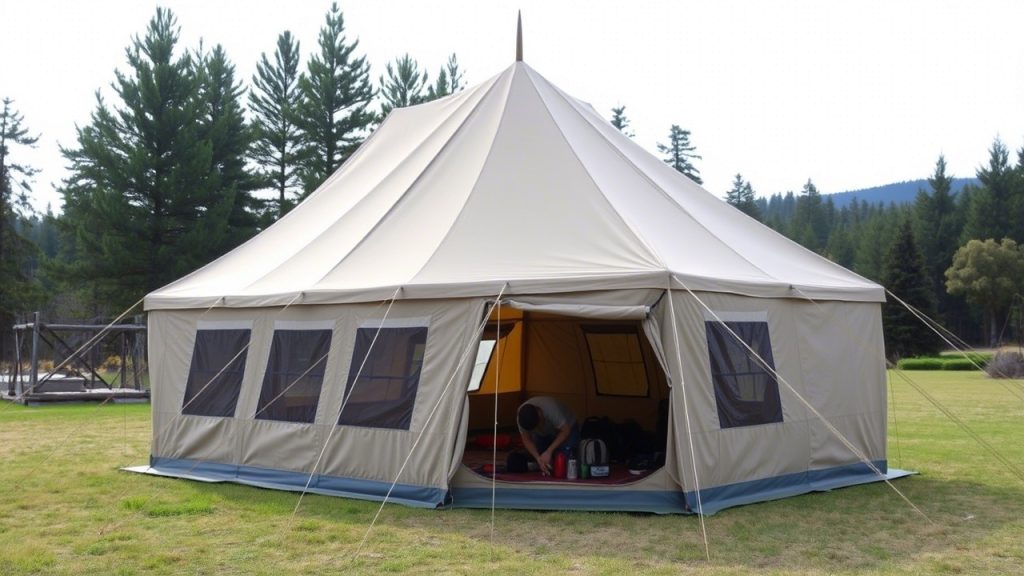Camping is one of life’s great pleasures — a chance to unplug, relax in nature, and spend quality time with family or friends. But let’s face it: while the outdoors is magical, it doesn’t always come with built-in privacy. Whether you’re in a busy campground, a national park, or even just car camping near other travelers, maintaining some personal space can make the experience much more enjoyable.
Luckily, with the right tent setup and smart privacy strategies, you can turn even the busiest campsite into your own private retreat. In this blog post, we’ll cover 16 of the best tent ideas to enhance privacy at the campsite, helping you create a cozy, secluded space no matter where you pitch your tent. We’ll also answer 9 frequently asked questions to help you plan with confidence.
Let’s dive in!
Why Privacy Matters at the Campsite
Before we jump into tent ideas, let’s talk about why privacy matters when camping. First, it gives you a sense of security. Even in safe campgrounds, having private space can help you relax and sleep better. Second, it helps maintain boundaries with neighboring campers — no one wants to feel like they’re on display. Third, it improves hygiene and comfort, especially when changing clothes or using portable toilets. Lastly, it enhances your overall camping experience, making the outdoors feel like your personal haven instead of a public space.
16 Best Tent Ideas to Enhance Privacy at the Campsite
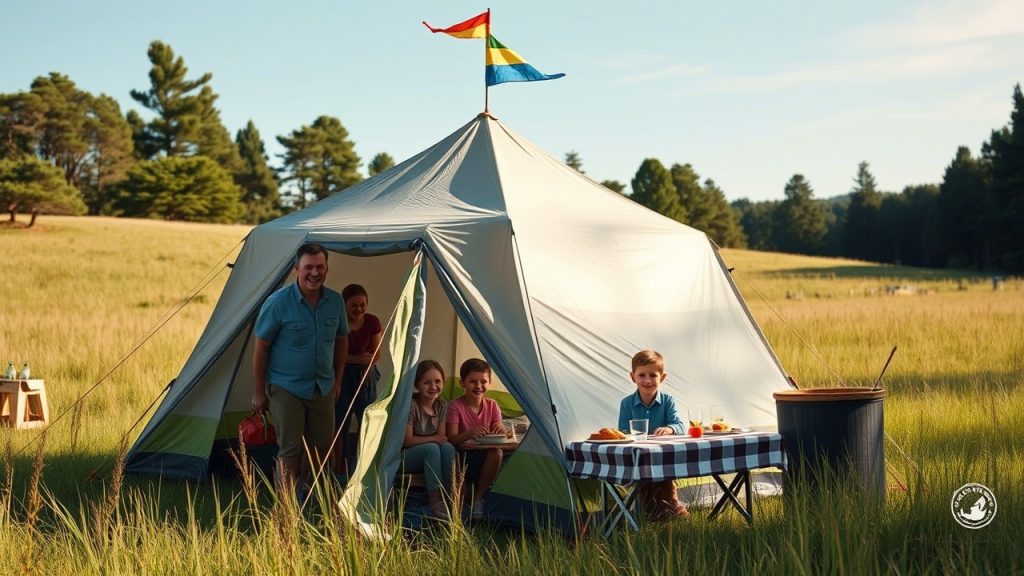
1. Use a Tent with a Divided Interior
Look for family tents or multi-room tents with dividers or multiple chambers. These tents often have zippered walls that separate the sleeping area from the living area or create two distinct bedrooms. It’s perfect for families, couples, or groups of friends who want to share a tent but still maintain personal space.
2. Choose a Tent with Dark Room or Blackout Technology
Many modern tents now come with dark room or blackout fabric that blocks sunlight and reduces interior visibility from the outside. Not only does this help you sleep in past sunrise, but it also keeps your activities more private when you have the tent lights on at night.
3. Use a Privacy Tent or Changing Room Tent
Privacy tents (sometimes called shower or changing tents) are lightweight pop-up shelters designed specifically to give you a private place to change clothes, use a camp toilet, or take a solar shower. They’re compact, affordable, and easy to set up alongside your main tent.
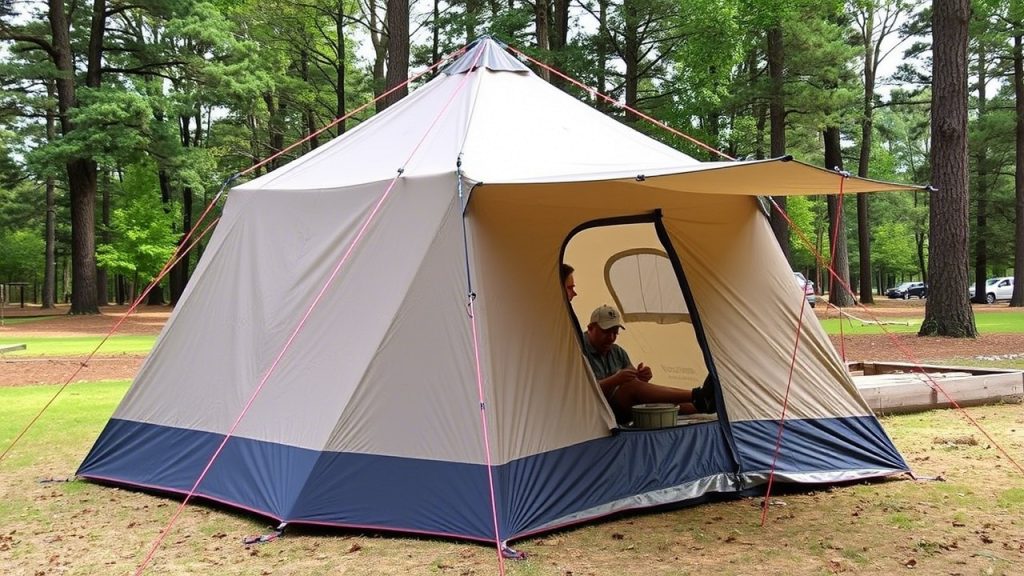
4. Add a Tent Awning or Canopy
An awning or canopy creates an extended “front porch” outside your tent, giving you a semi-private outdoor living space. Use sidewalls or hanging fabric to enclose the sides for even more privacy while you cook, eat, or relax.
5. Use Tarps and Windbreaks
Strategically placing tarps or windbreaks around your tent is one of the simplest and most affordable ways to increase privacy. You can string tarps between trees, attach them to poles, or use purpose-built windbreak panels to block sightlines from neighbors.
6. Set Up a Separate Kitchen or Dining Shelter
Instead of doing everything in or near your main tent, consider setting up a separate kitchen tent or screen shelter. Not only does this improve food prep space and reduce crowding, but it also keeps your living and sleeping area more secluded.
7. Choose a Tent with Vestibules
A tent with large vestibules (covered entryways) lets you store gear and shoes outside the main tent body, keeping the interior clutter-free and more private. Some vestibules are big enough to act as mini rooms for sitting, cooking, or reading without being seen.
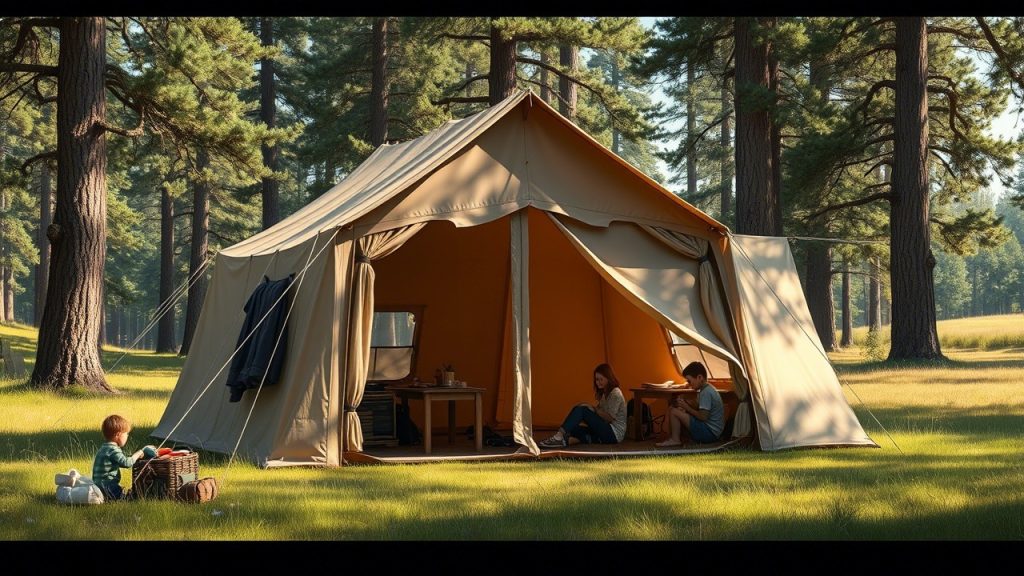
8. Pick a Tent with High Walls and Low Windows
Tents with high side walls and small or adjustable windows provide better privacy without sacrificing ventilation. Look for tents that let you zip the windows shut from the inside.
9. Camp in a Secluded Spot
Sometimes the best privacy trick isn’t about the tent — it’s about location. Walk or drive a little farther to find a more isolated campsite away from crowds. Look for natural privacy features like trees, boulders, or hills that block the view.
10. Use Reflective or Patterned Tent Fabric
While bright colors are great for visibility, they also make you stand out. Consider tents with reflective or camo-style fabric that blends in better with the surroundings, making your site less conspicuous to passersby.
11. Hang Extra Fabric or Blankets
If you’re on a budget, bring extra blankets, sheets, or sarongs to hang around your tent. Drape them over guy lines, tarps, or trees to create instant privacy screens — this works especially well at festivals or crowded campgrounds.

12. Use Tent Footprints or Ground Tarps
While often overlooked, a footprint or ground tarp helps define your tent area and subtly signals boundaries to neighboring campers. It also improves comfort by keeping your tent clean and dry.
13. Choose a Dome or Tunnel Tent Shape
Tent shape matters for privacy. Dome and tunnel tents have lower profiles, making them less visible from a distance compared to tall cabin-style tents. They also tend to have fewer large mesh panels, which keeps the interior more private.
14. Upgrade to an Overlanding or Roof-Top Tent
For car campers or overlanders, roof-top tents offer exceptional privacy. Elevated above ground, they’re harder to see into and let you camp in more remote locations, away from busy campgrounds.
15. Use Guy Lines and Stakes to Create Separation
You can use guy lines creatively to set up “no-go zones” around your tent. For example, stake out a wide tarp or rainfly with tensioned guylines to create a perimeter that discourages people from wandering too close.
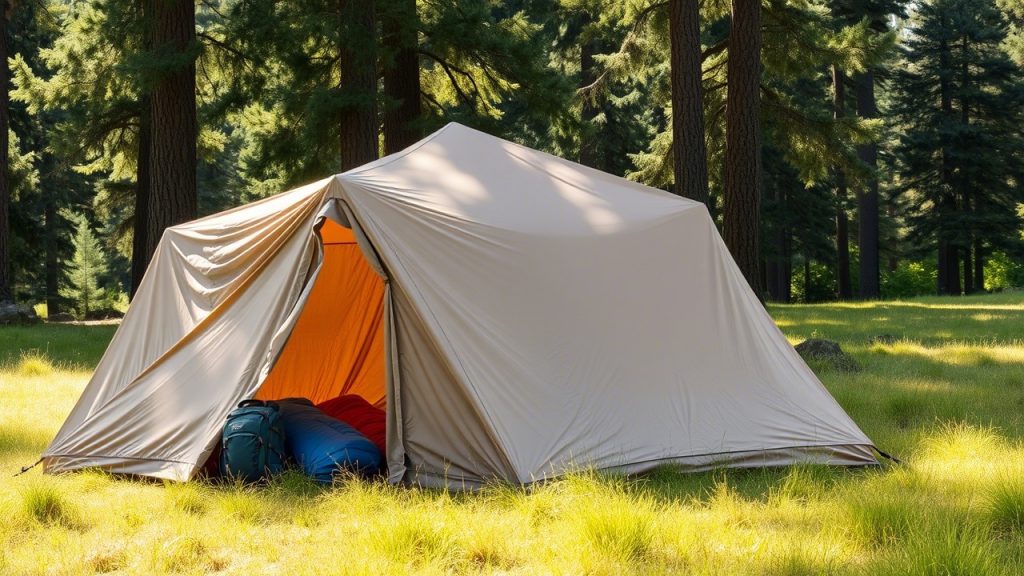
16. Bring Along Natural Barriers
If you’re car camping, consider bringing foldable bamboo screens, potted plants, or even small garden fences. These can be placed around your tent area to add an attractive and functional privacy barrier.
Extra Tips to Maximize Privacy
- Arrive early to pick the best campsite.
- Face your tent doors and windows away from trails and main paths.
- Keep noise levels low to avoid drawing attention.
- Use headphones for music or movies.
- Respect others’ privacy — what goes around, comes around!
How to Choose the Best Privacy Tent for Your Needs
When selecting a tent or privacy accessory, think about:
- Group size: How many people need privacy?
- Purpose: Is it for sleeping, changing, showering, or cooking?
- Setup time: Do you want something quick, or are you okay with more effort?
- Weight: If you’re backpacking, go lightweight; if car camping, you can go bigger.
- Budget: There are great options at every price point, from DIY tarps to high-end tents.

Maintenance Tips for Privacy Tents
- Always dry your tent completely before packing it away to prevent mildew.
- Check zippers, poles, and seams regularly.
- Clean off dirt and sand, especially from blackout fabrics.
- Store in a breathable bag, not a tight stuff sack, when not in use.
Frequently Asked Questions
1. What is the best tent for privacy when camping with kids?
Look for a multi-room tent with dividers, like the Coleman Cabin Tent or the CORE 9-Person Instant Cabin Tent. This lets kids and adults have separate sleeping areas.
2. Are blackout tents worth it for privacy?
Yes! Blackout tents not only help you sleep better by blocking sunlight but also improve privacy by making it harder to see shadows and light from outside.
3. How can I create privacy in a public campground?
Use tarps, privacy screens, or natural barriers like trees and bushes. Position your tent with doors facing away from high-traffic areas and set up camp early to claim a good spot.
4. What is a privacy shelter?
A privacy shelter is a portable pop-up tent designed for showering, changing clothes, or using a camp toilet. They’re compact, lightweight, and easy to set up alongside your main tent.
5. Can I make my current tent more private?
Yes! Add blackout liners, hang extra fabric, use tarps or windbreaks, and be mindful of your site layout. You don’t always need a new tent to improve privacy.
6. Are rooftop tents more private?
Definitely. Being elevated off the ground gives you more separation from other campers and passersby, plus the walls are typically thicker and less exposed than ground tents.
7. Do cabin tents offer less privacy?
Sometimes. While cabin tents are roomy, they often have large mesh windows and taller walls that are more visible. Use window covers or position them carefully to improve privacy.
8. What are the best budget options for improving privacy?
Tarps, blankets, and DIY screens are great low-cost options. You can also find affordable pop-up privacy tents for under $50 online.
9. How do I respect other campers’ privacy?
Stay on designated trails and paths, keep a respectful distance, avoid loud noises late at night, and don’t shine lights into other campsites.
Final Thoughts
Camping is all about enjoying nature, but a little privacy goes a long way toward making the experience more comfortable and enjoyable. Whether you invest in a multi-room tent, add a privacy shelter, or use creative DIY solutions, these 16 tent ideas to enhance privacy at the campsite will help you turn any outdoor space into your personal sanctuary.
With smart planning and the right gear, you can enjoy the best of both worlds — the beauty of the outdoors and the comfort of private space.
If you’d like, I can also write meta descriptions, social media captions, or Pinterest pins to help promote this blog post. Would you like me to prepare those as well? 🌿

